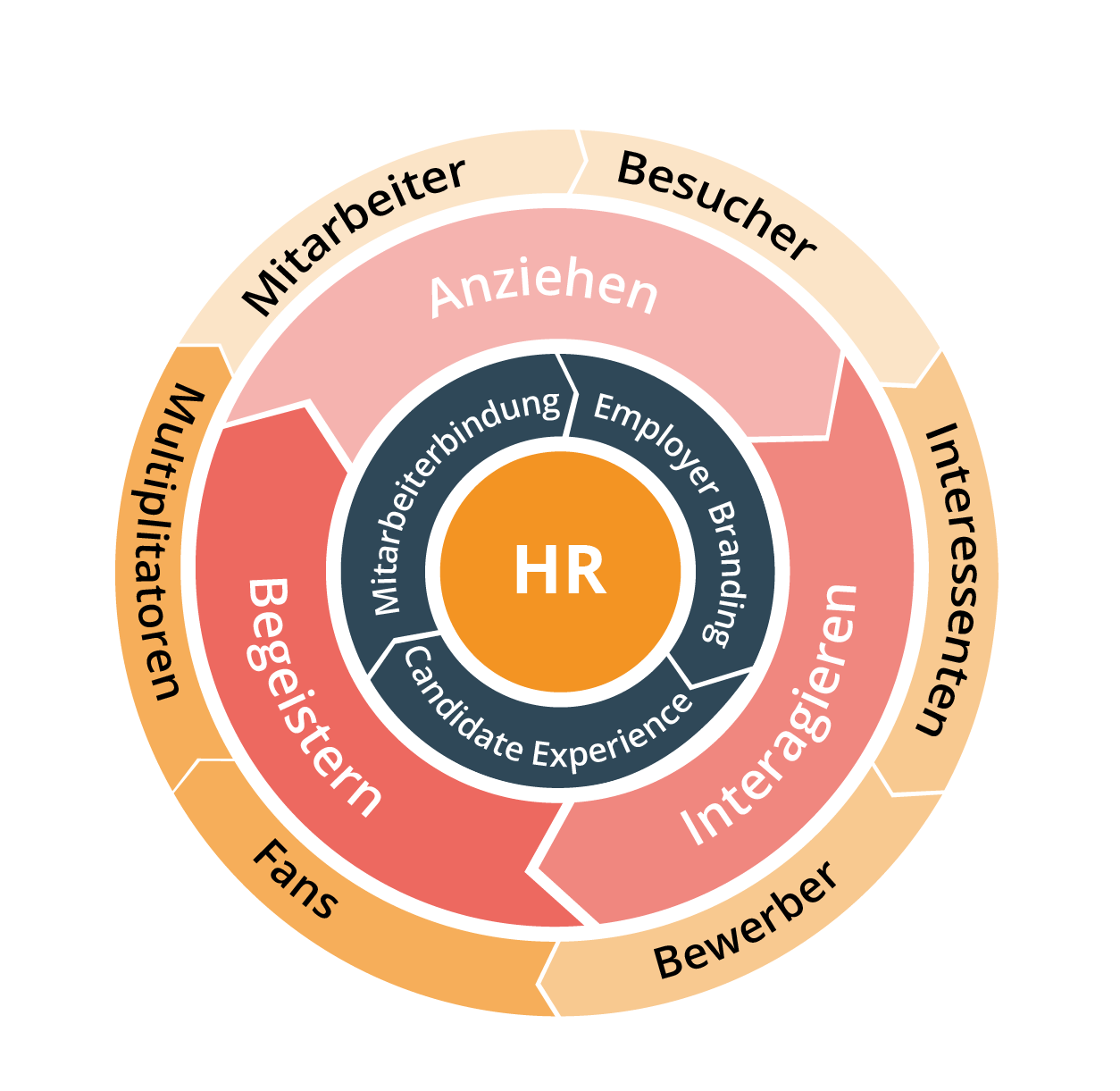Finding good employees is only half the battle. What truly matters is how they arrive, stay – and contribute to the company. This is exactly where the flywheel recruiting model comes in: it does not see recruiting as a one-way street – with a clear starting point (searching for and finding future employees) and an endpoint (employment) – but as a continuous cycle. If you want to truly inspire talent in the long term, you have to think beyond the signing of the contract – and intentionally invest in relationships.
Why recruiting needs a new approach
For years, linear models such as the recruiting funnel have dominated talent acquisition. But they fall short: they end at the employment contract – leaving out key aspects like onboarding, employee retention, or referrals. The flywheel recruiting model addresses this gap. It sees recruiting as a cycle, where employees are not just the target audience, but active co-creators. It's a principle rooted in marketing – and it's gaining increasing relevance in HR.
What is the flywheel recruiting model?
The flywheel model (also known as the “momentum wheel”) is a dynamic circular model. Unlike the funnel, which flows top to bottom, the flywheel spins continuously – powered by positive experiences and active engagement. In recruiting, this means: the process does not end with the contract but continues seamlessly. Employees actively contribute to success – through motivation, loyalty, and advocacy. A functioning flywheel is built on the idea that every touchpoint with candidates or employees has an impact – and can generate energy that strengthens the entire cycle.
How does the flywheel recruiting model work?
The flywheel in recruiting follows three key phases:
- Attract:
Create visibility, build trust, spark interest. This is achieved through high-quality content, targeted channels, clear values, and genuine value for the target audience. - Engage:
Create a positive candidate experience – through individualised communication, transparent processes, and a sincere interest in applicants' needs. - Delight:
Don’t just hire talent – embed it sustainably. This means structured onboarding, real development opportunities, and ongoing appreciation in everyday work.
Satisfied employees provide the momentum needed – they keep the flywheel moving and bring new energy into the system.

Funnel vs Flywheel: A paradigm shift
In the traditional recruiting funnel, the focus is on signing the contract. The process is linear, measurable – and ends abruptly. The flywheel recruiting model, on the other hand, goes further: it does not see employees as the "end point" but as part of the cycle. The energy comes from within – through feedback, identification, and referrals.
Recruiting Funnel
- Linear, goal-oriented
- Focus on contract completion
- Employees = End point
- No feedback loop
Recruiting Flywheel
- Circular, dynamic
- Focus on relationships and retention
- Employees = Driving force
- Continuous improvement
Why is the flywheel recruiting model worth it?
The flywheel model promotes a shift in HR thinking: away from one-off actions – and towards holistic, sustainable relationship-building. It improves internal collaboration, raises the quality of the application process, and strengthens the employer brand in the long term. It also has a direct impact on employee satisfaction. Those who are treated with respect from the start and experience a thoughtful process are more likely to stay – and recommend the company.
Conclusion: Momentum with a system
The flywheel recruiting model brings new energy to talent acquisition. It connects recruiting, onboarding, employee retention, and employer branding into a seamless experience – for both candidates and existing staff. Instead of stopping processes when the contract is signed, this is where true momentum begins. Those who design this cycle intelligently do not just attract talent – they turn it into an active part of the company’s success.
Ready to set your flywheel in motion?
With Refline’s recruiting software, you can strengthen candidate experience, employee retention, and internal collaboration – all in line with the flywheel recruiting model.